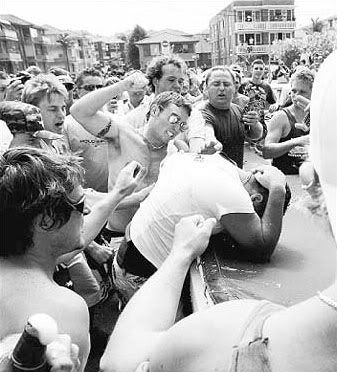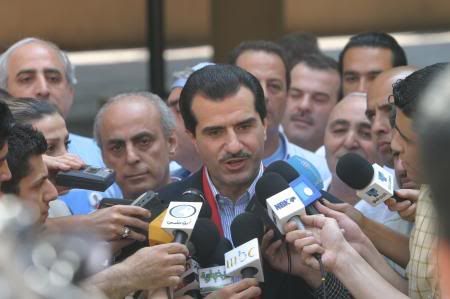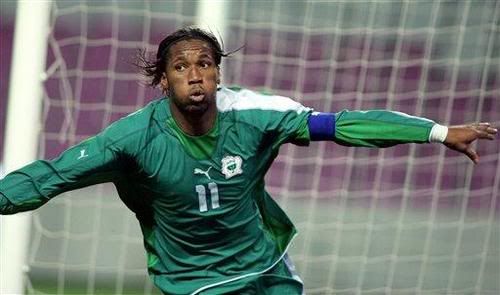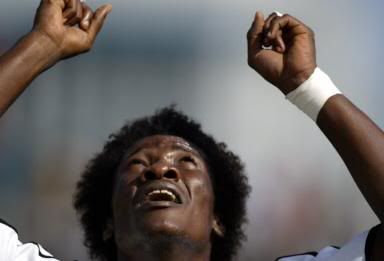By Fernando Kallás to The Lebanese Blogger Forum
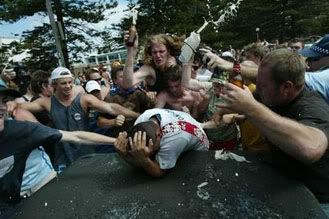
"A bare-chested youth in Quicksilver boardshorts tore the headscarf off the girl's head as she slithered down the Cronulla dune seeking safety on the beach from a thousand-strong baying mob.
Up on the road, Marcus "Carcass" Butcher, 28, a builder from Penrith, wearing workboots, war-camouflage shorts and black singlet bearing the words "Mahommid was a camel f---ing faggot" raised both arms to the sky. "F--- off, Leb," he cried victoriously." (The Sydney Morning Herald - December 12th 2005)
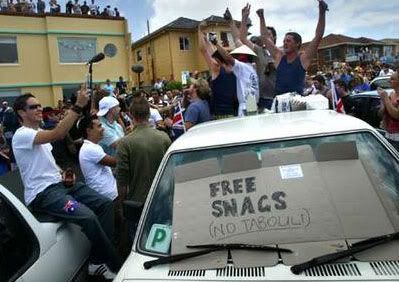
First of all, I would like to warn about the strong and shocking images that follows this article. But I think they're necessary under the circumstances.
I'm really sorry also that my first post in the Leb Blogger Forum has to be about such sickening, shameful and outrageous events that are happening in Australian in the last couple of days.
It all started as a beach party in Cronulla - Sydney, celebrating a kind of perverted nationalism that was gatecrashed by racism. A crowd of at least 5000 - overwhelmingly under 25 - took over Cronulla's foreshore and beachside streets. Police were powerless as 200-odd ringleaders, many clutching bottles or cans of beer and smoking marijuana, led assaults on individuals and small groups of Lebanese Australians who risked an appearance during the six-hour protest
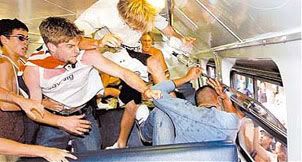
Officers arrested 28 people in hours of street battles that left 31 people injured, including two ambulance officers and five policemen. One man was hospitalized after being stabbed in the back.
The violence shocked this city of 4 million which prides itself on being a largely harmonious cultural melting pot, but racism is not new in Australia.
Australia always had the racial question in its internal political agenda. Colonized by the British since 1788, the country was built by white Europeans Emigrants and the State followed an OFICIAL policy of "whitening" the native aborigines population until de 1970's, maintaining concentration camps to facilitate it.
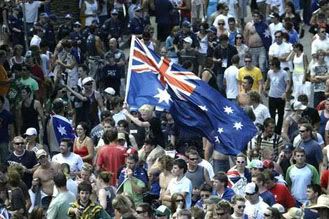
In the 1990's, the racist deputy Pauline Hanson founded the One Nation Party, with a xenophobic platform. The ultra-conservative party earned fast national projection and got 9% of the voters’ preference in the parliament elections of 1998. In her first speech as a deputy, Hanson declared that "the country was in danger of being dominated by the Asians". In the local municipality of Queensland, her fellow colleagues from the One Nation got 11 of the 89 local seats. Pauline didn't get re-elected, but as we can see, some of her ideas are still very actual among the youth.
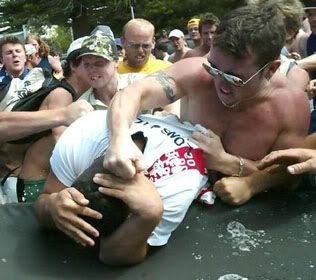
This anti-Leb sentiment has been brewing for a long time and surfaced radically after the first gang-rapes of a "white girls" by Lebanese boys a few years ago. This spring we had a round table at LAU to debate the subject. The occasion was the release of the book "Bin Laden in the Suburbs", that blame the media, police and conservative politicians for the role thing, using a lot of drama but with no convincing argument. The problem is much deeper than that and there is plenty of blame to go around, evolving poverty, lack of opportunities and even radical Islamic clergy in that country.
As a colleague said in that debate, "The genuine research (and to an extent political) question is whether there is indeed a distinct difference between Muslim immigrant communities and other communities from traditional, underdeveloped regions, e.g. Macedonia, Bulgaria, Greece, Portugal, Latin America, Philippines, etc.; and if this is the case, which steps can facilitate rapid integration into Western society. This is not an academic question."
Meanwhile we stay here; watching astonished the late events and asking ourselves if there is really a way out...
